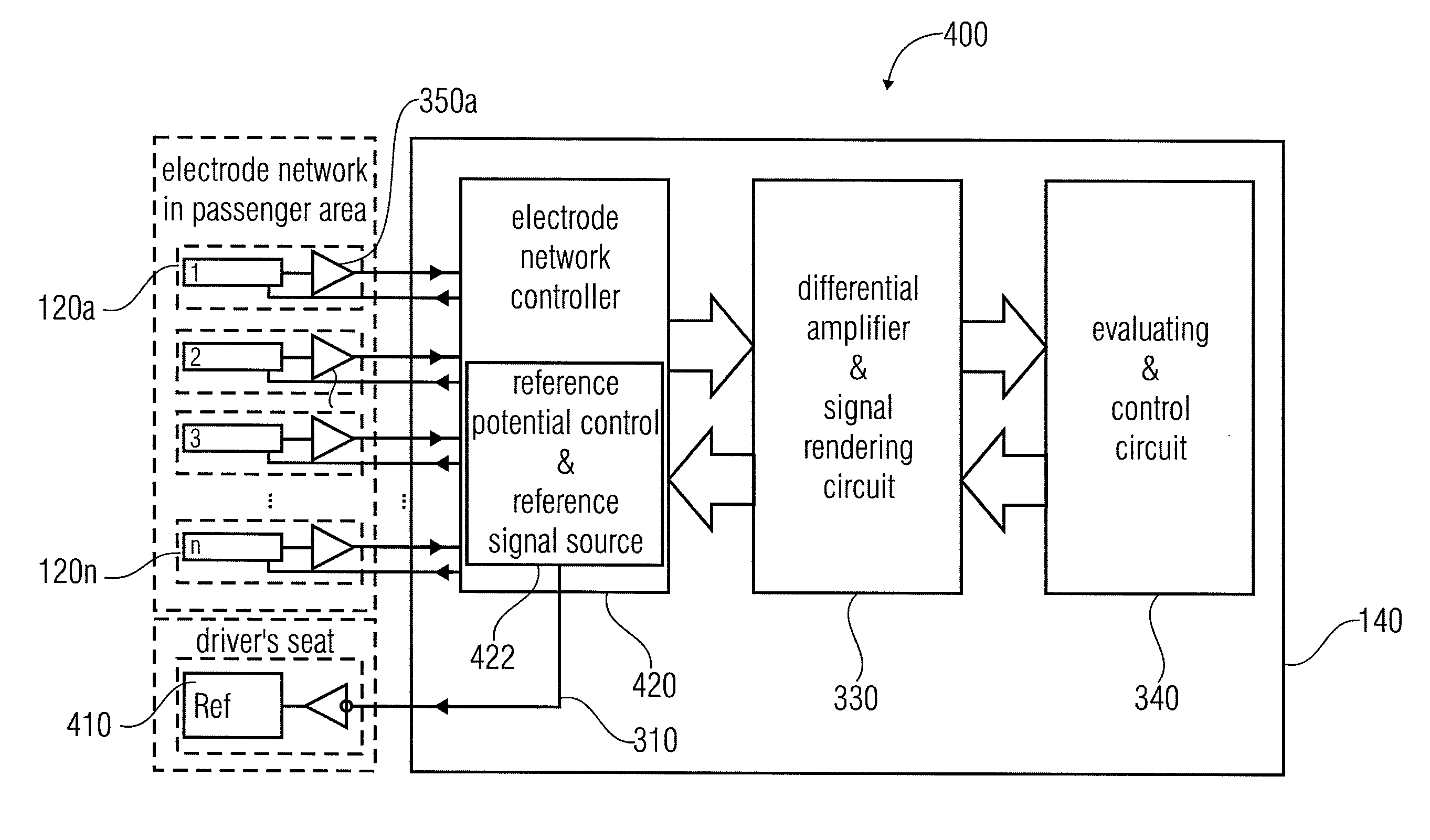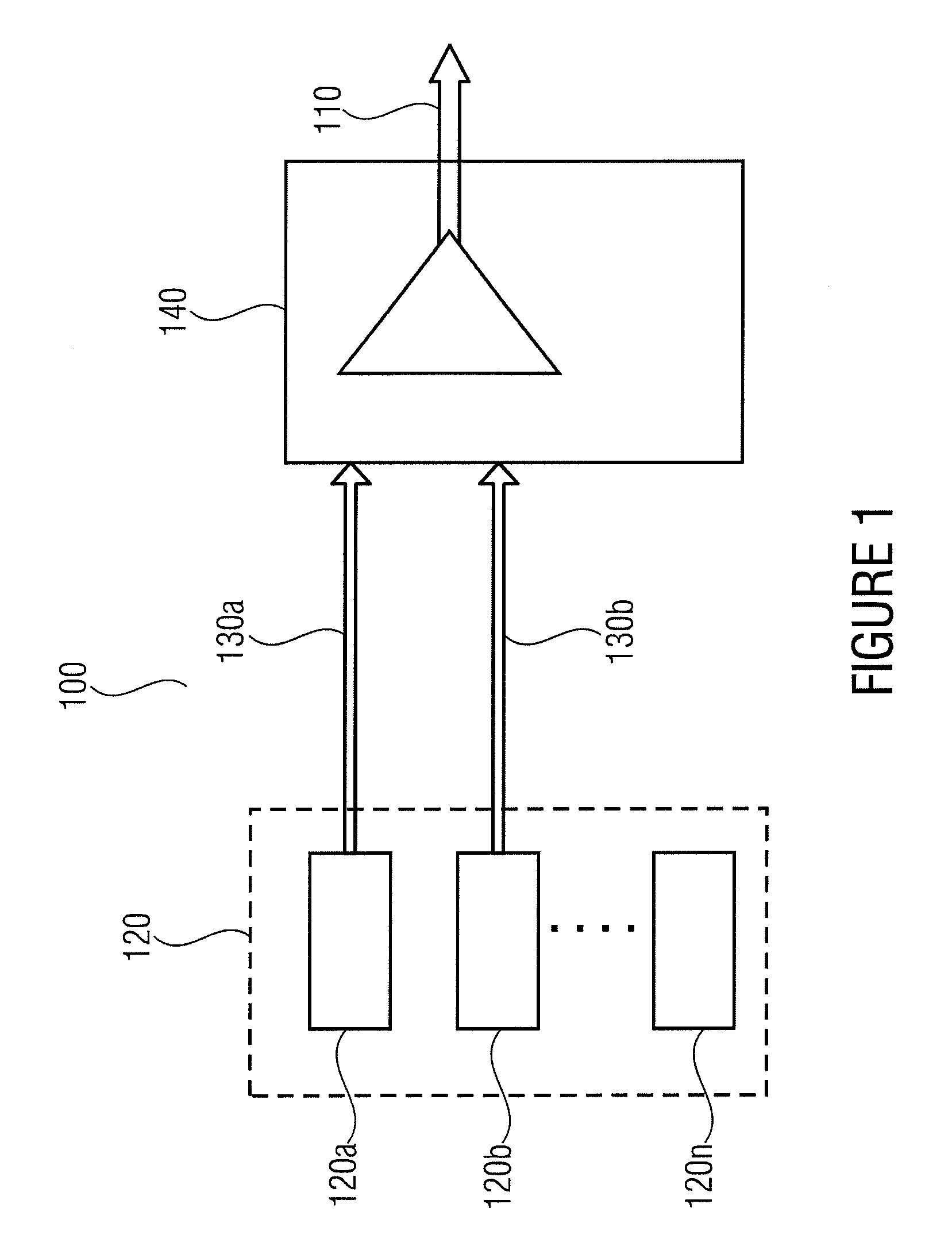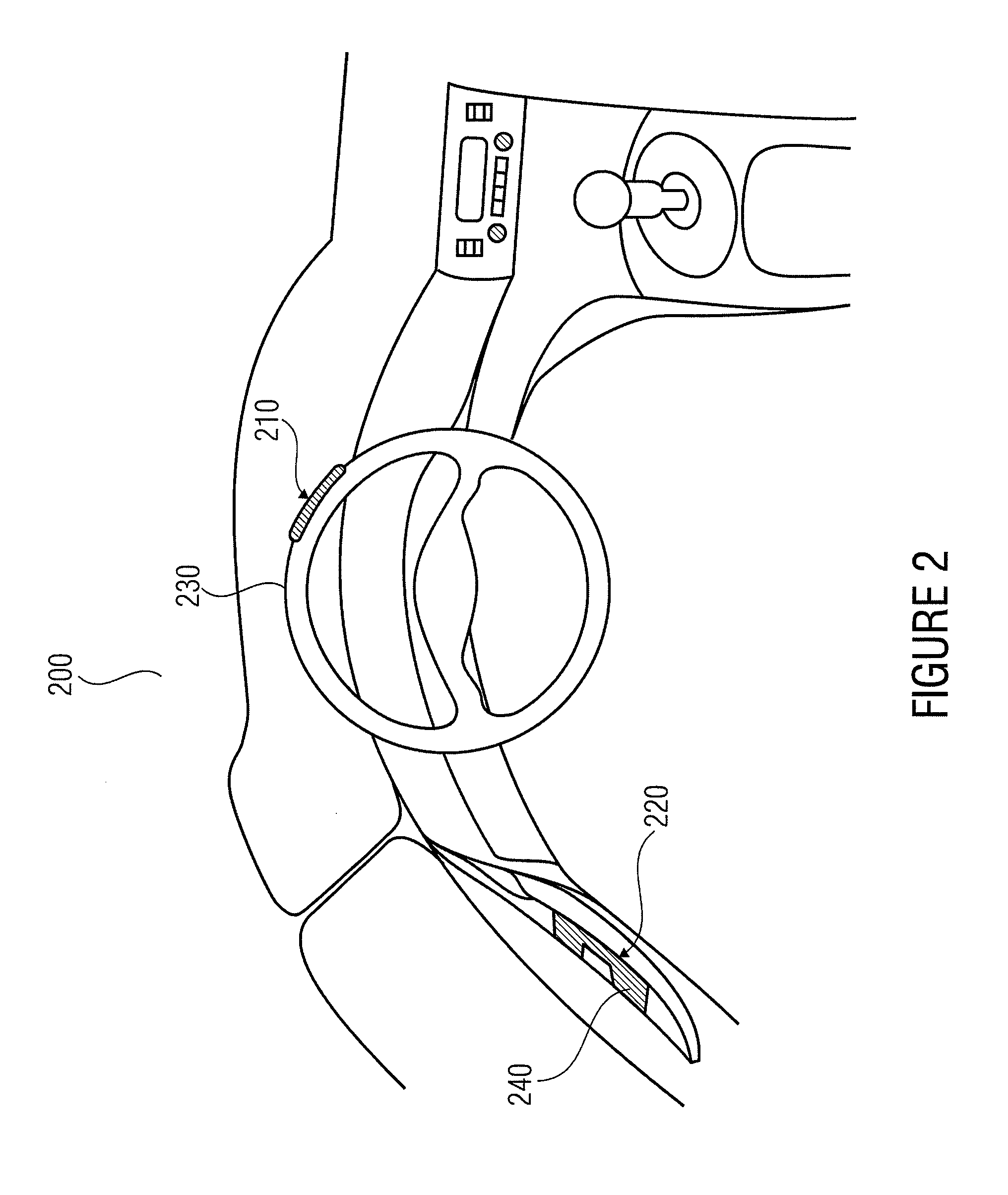Signal detecting device for detecting a difference signal for an electrical measurement of a vital parameter of a living being, electrode arrangement and method
a technology of electrical measurement and signal detection device, which is applied in the field of signal detection device for detecting a difference signal for an electrical measurement, can solve the problems of no system known on the market which is really able to record vital data, the ecgs recording of the electrocardiograph, and the build-up time of the sensors, so as to improve the continuous detection and increase the contact probability
- Summary
- Abstract
- Description
- Claims
- Application Information
AI Technical Summary
Benefits of technology
Problems solved by technology
Method used
Image
Examples
first embodiment
FIG. 1 shows a schematic illustration of a signal detecting device 100 in accordance with the present invention. The signal detecting device 100 for detecting a difference signal 110 for an electrical measurement of a vital parameter of a living being includes a plurality 120 of electrodes 120a-120n and an electrode selecting device 140. The electrodes 120a-120n are connected to the electrode selecting device 140 so as to provide electrode signals 130 to the electrode selecting device 140.
Electrodes 120a-120n from the plurality of electrodes can contact the living being and provide electrode signals 130 to the electrode selecting device 140. Based on, for example, the strength (or amplitude) of the electrode signals 130 (or another characteristic feature of the electrode signals 130, like, for example, an intensity and characteristic signal shape or a characteristic frequency portion) of the individual electrodes 120a-120n, the electrode selecting device 140 can select one pair of e...
second embodiment
FIG. 2 shows a picture of an electrode arrangement 200 in accordance with the present invention. The electrode arrangement 200 is integrated in an MC, a first electrode 210 being applied in, at or on an operating element 230. A second electrode 220 is applied in, at or on a rest element 240 of the MC. The operating element 230 may exemplarily be a steering wheel of the MC, wherein the rest element 240 may exemplarily be an armrest area of the driver's door of the MC.
The first electrode 210 and the second electrode 220 are arranged in the MC such that they are able to contact the MC user (exemplarily when same is in a driving position). Exemplarily, the first electrode 210 may be arranged such that it contacts the right hand of the MC user and the second electrode 220 may be arranged such that it contacts the left hand of the MC user. The electrode arrangement 200 shown may thus be used to detect, for example, a difference signal for electrically measuring a vital parameter of the MC...
third embodiment
FIG. 3a shows a schematic illustration of a signal detecting device 300 in accordance with the present invention. The signal detecting device 300 includes a plurality of electrodes 120a-120n or electrode network 120. The electrode network 120 includes at least a first electrode 120a, a second electrode 120b and a third electrode 120c. The electrode network 120 may include any number of additional electrodes 120a-120n. In addition, the signal detecting device 300 includes an electrode selecting device 140. The electrode selecting device 140 includes an electrode network controller 320, a differential amplifier and signal rendering circuit 330 and an evaluating and control circuit 340. The electrode network controller 320 includes means 322 for capacitive signal coupling-in and capacitive reference potential driving including a reference signal source. In other words, FIG. 3a shows an exemplary integration of the signal detecting device 300 or the system for detecting the ECG by means...
PUM
 Login to View More
Login to View More Abstract
Description
Claims
Application Information
 Login to View More
Login to View More - R&D
- Intellectual Property
- Life Sciences
- Materials
- Tech Scout
- Unparalleled Data Quality
- Higher Quality Content
- 60% Fewer Hallucinations
Browse by: Latest US Patents, China's latest patents, Technical Efficacy Thesaurus, Application Domain, Technology Topic, Popular Technical Reports.
© 2025 PatSnap. All rights reserved.Legal|Privacy policy|Modern Slavery Act Transparency Statement|Sitemap|About US| Contact US: help@patsnap.com



